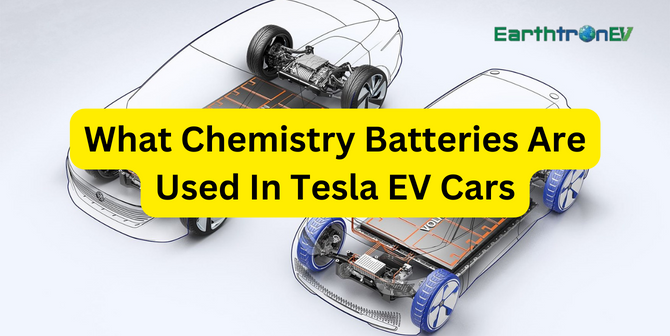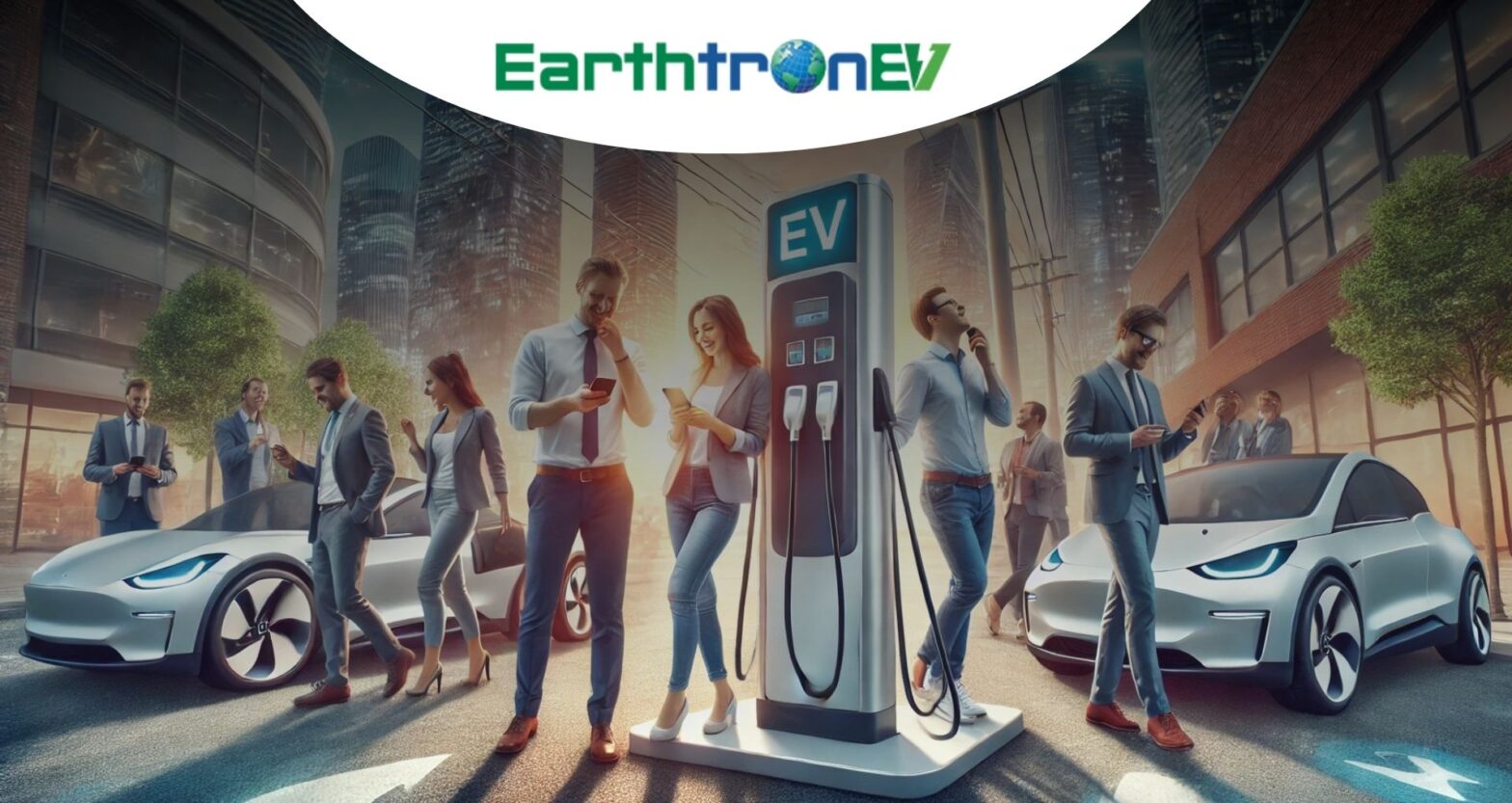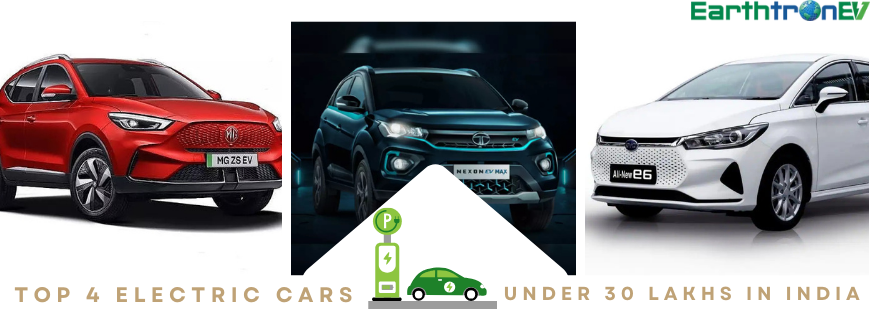Are you curious about the revolutionary technology that powers Tesla electric vehicles? Do you ever wonder how these sleek machines zoom down the road without a drop of gasoline? Prepare to be electrified as we dive into the captivating world of the chemistry behind Tesla EV car batteries. In this blog post, we will unveil the secrets behind their mesmerizing performance and unlock the science that propels our future on wheels. Get ready for a shockingly enlightening journey through the inner workings of these incredible machines!
Introduction to Chemistry and Battery Basics
In order to understand how Tesla’s EV batteries work, we must first understand a little bit about chemistry and battery basics. Batteries are devices that store energy in chemical form and convert it to electrical energy. The chemical reactions that occur inside batteries are known as electrochemical reactions.
Batteries are made up of three basic components: an anode, a cathode, and an electrolyte. The anode is the negative electrode of the battery where oxidation occurs. The cathode is the positive electrode of the battery where reduction occurs. The electrolyte is a conductive medium that allows electrons to flow between the anode and cathode.
Tesla’s EV batteries use lithium-ion technology. Lithium-ion batteries work by intercalating lithium ions between the layers of the anode and cathode during charging and discharging. During charging, lithium ions flow from the anode to the cathode through the electrolyte. This causes the anode to expand and become less negative while the cathode becomes more positive. During discharge, lithium ions flow from the cathode to the anode, causing the opposite effect on voltages.
Lithium-ion batteries have several advantages over other types of batteries, such as lead-acid batteries. They have a higher energy density, meaning they can store more energy per unit volume than other types of batteries. They also have a lower self-discharge rate, meaning they lose less energy over time when not in
Types of Battery Chemistries for Tesla EV Cars
Tesla EV cars use one of three types of battery chemistries:
1. Lithium-ion batteries: These are the most common type of battery used in Tesla EV cars. They are lightweight and have a high energy density, which makes them ideal for electric vehicles.
2. Nickel-metal hydride batteries: These batteries are less common than lithium-ion batteries, but they offer a longer lifespan and are more resistant to temperature extremes.
3. These batteries are similar to lithium-ion batteries, but they have a gel or polymer electrolyte instead of a liquid electrolyte. This makes them more resistant to fires and explosions, making them a safer option for electric vehicles.
Pros and Cons of Battery Chemistry Used in Tesla EV Cars
When it comes to electric vehicles (EVs), the debate over which battery chemistry is best is ongoing. Some contend that lithium-ion batteries are the way to go, while others believe that newer chemistries like lithium-air or solid-state batteries are better suited for EVs. Tesla, one of the leading EV manufacturers, has made a bet on lithium-ion batteries, and so far it seems to be paying off. In this article, we’ll take a closer look at the chemistry behind Tesla’s EV batteries and explore some of the pros and cons of using lithium-ion batteries in EVs.
One of the biggest advantages of using lithium-ion batteries in EVs is their high energy density. This means that they can store a lot of energy in a small space, which is ideal for electric cars. Lithium-ion batteries also have a relatively long lifespan; with proper care, they can last for thousands of charge cycles. Additionally, they’re relatively quick and easy to recharge.
However, there are also some drawbacks to using lithium-ion batteries in EVs. One is that they’re sensitive to temperature changes; if the battery gets too hot or too cold, it can degrade quickly. Additionally, Li-ion batteries are also expensive; although the cost has come down in recent years, they’re still significantly more expensive than other types of batteries.
How the Tesla EV Car Batteries Work
How do Tesla EV car batteries work? It’s all thanks to the amazing chemistry of lithium-ion batteries!
Lithium-ion batteries are made up of a negative electrode (anode) and a positive electrode (cathode), separated by an electrolyte. When the battery is charging, lithium ions flow from the anode to the cathode through the electrolyte. When the battery is discharging, the ions flow in the reverse direction.
The anode is usually made of carbon, while the cathode is typically made of a metal oxide. The electrolyte is typically a mixture of organic solvents that can conduct ions.
Tesla uses cylindrical 18650 Lithium Ion cells for their Model S and Model X electric vehicles. These cells are encased in steel cylinders and arranged in modules within the vehicle. Each module contains 486 cells connected in series to form a nominal voltage of 375 volts. The modules are then connected in parallel to create a high-capacity battery pack capable of storing 90 kilowatt-hours (kWh) or more of electrical energy.
The cells used in Tesla’s electric cars are slightly different than those used in most consumer electronics because they are designed to withstand high temperatures and provide high power output. The chemistry of the electrodes has also been optimized for fast charging and discharge rates.
Chemistry Behind Charging and Recharging Tesla EV Car Batteries
When it comes to electric vehicles (EVs), Tesla is a big name. But what’s the chemistry behind Tesla EV car batteries? How do they work?
Here’s a look at the chemistry behind charging and recharging Tesla EV car batteries:
The positive electrode of a lithium-ion battery is made of lithium cobalt oxide (LiCoO2), while the negative electrode is made of carbon (C). During discharge, lithium ions flow from the positive to the negative electrode, producing an electric current.
To charge the battery, an external power source supplies electrical energy that reverses the flow of lithium ions back to the positive electrode. This process is known as “recharging.”
Charging and recharging Tesla EV car batteries is a two-step process: first, a low voltage is applied to start the flow of ions; then, a higher voltage is applied to complete the charging process.
The time it takes to charge a Tesla EV car battery depends on several factors, including the type of battery, the size of the battery, and how much charge it needs. For example, it typically takes about four hours to charge a Model S 85 kWh battery using a 240-volt Level 2 charger.
Alternatives to the Battery Chemistry Used in Tesla EV Cars
Tesla’s EV batteries are unique in the automotive world, and there are several different chemistries used in Tesla’s batteries. The most common battery chemistry used in Tesla’s EV batteries is the lithium-ion battery. However, there are also some alternative chemistries used in Tesla’s batteries, such as the nickel-metal hydride battery and the lead-acid battery.
The lithium-ion battery is the most popular type of battery used in electric vehicles and for good reason. Lithium-ion batteries are incredibly energy dense, meaning that they can store a large amount of energy in a small space. They are also relatively lightweight, making them ideal for use in electric vehicles. Additionally, lithium-ion batteries have a long life span, meaning that they will last for many years before needing to be replaced.
The nickel-metal hydride battery is another type of battery that is sometimes used in electric vehicles. Nickel-metal hydride batteries are not as energy-dense as lithium-ion batteries, but they do have some advantages. Nickel-metal hydride batteries are much cheaper to produce than lithium-ion batteries, making them a more affordable option for many people. Additionally, nickel-metal hydride batteries tend to have a longer life span than lithium-ion batteries, meaning that they will last even longer before needing to be replaced.
Conclusion:
In conclusion, Tesla EV car batteries are an incredible feat of engineering and chemistry. The combination of lithium-ion cells, advanced circuitry, and temperature regulation creates a reliable power source for vehicles. By understanding how these components interact with one another to form a powerful battery pack, we can better appreciate just how impressive these high-tech devices truly are. With electric cars becoming increasingly popular in today’s world, it is important to understand the chemistry behind them so that we can make informed decisions about our energy consumption and carbon footprint.







